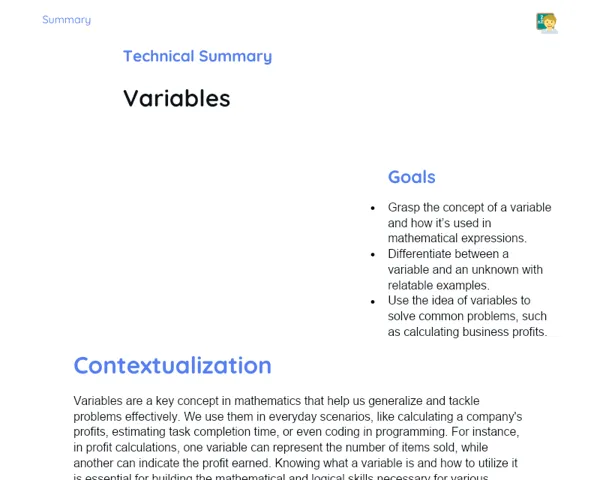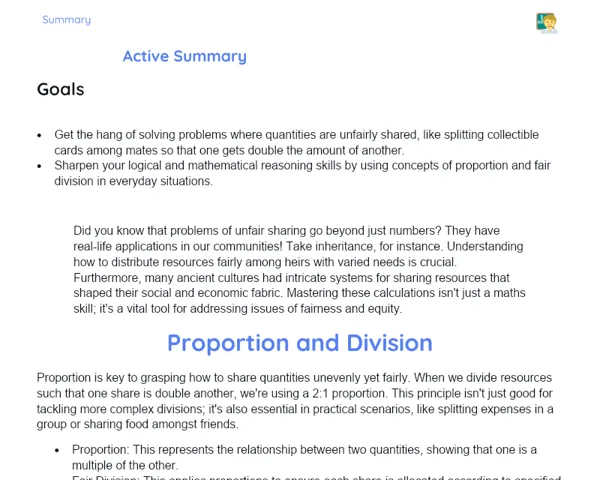Objectives
1. 📐 Understand and apply the formula for the area of a triangle (area = (base x height) / 2) to various types of triangles: equilateral, isosceles, and scalene.
2. 📐 Develop analytical and practical skills in calculating areas, enhancing your ability to solve both real and theoretical challenges.
3. 📐 Work collaboratively with your classmates to tackle mathematical puzzles, promoting teamwork and effective communication.
Contextualization
Did you know that knowing the area of a triangle is important not just in maths, but also in areas like architecture and engineering? For example, civil engineers use triangles to figure out how stable bridges and buildings will be. Understanding triangle areas doesn’t just solve maths problems, it also helps you appreciate how structures are built in the world around you!
Important Topics
Calculating the Area of Equilateral Triangles
Equilateral triangles have all sides equal in length. To find the area of an equilateral triangle, you start with the general area formula (area = (base x height) / 2), but you need to calculate the height from one of the triangle's sides using the Pythagorean theorem. This method reinforces the basic formula while introducing more advanced geometry concepts.
-
Identify the base and height: In an equilateral triangle, any side can act as the base. The height is the perpendicular line from the base to the opposite vertex.
-
Use the Pythagorean theorem: To find the height, halve the base to create two right triangles, then apply the theorem to calculate the height.
-
Apply the area formula: Once you have the height, use the area formula (area = (base x height) / 2) to determine the area of the equilateral triangle.
Calculating the Area of Isosceles Triangles
Isosceles triangles have two equal sides and one that differs. To find their area, use the basic formula (area = (base x height) / 2), but you'll also need to find the height. The height is a perpendicular line from the vertex opposite the base, cutting the base in half.
-
Determine the base: Typically, the side that is different in length acts as the base.
-
Calculate the height: Use basic geometric properties or the Pythagorean theorem as needed.
-
Apply the area formula: With the base and height known, plug these values into the general formula to find the area of the isosceles triangle.
Calculating the Area of Scalene Triangles
Scalene triangles have sides of different lengths, which can complicate height calculations. However, the area formula (area = (base x height) / 2) is still applicable. The height is found by drawing a perpendicular line from the vertex opposite the base to the base.
-
Choose the base: Any side can serve as the base, depending on the problem's context or ease of calculation.
-
Determine the height: Since there are no equal sides, calculate the height carefully using geometric or trigonometric methods for more accuracy.
-
Use the area formula: With the base and height established, calculate the area of the scalene triangle using the standard formula.
Key Terms
-
Triangle Area: The measure of the space inside a triangle, typically calculated as area = (base x height) / 2.
-
Base: The side of a triangle upon which the height is measured perpendicularly.
-
Height: The perpendicular distance from the base to the opposite vertex of the triangle.
-
Pythagorean Theorem: A fundamental principle stating that in a right triangle, the square of the hypotenuse (the side opposite the right angle) equals the sum of the squares of the other two sides.
For Reflection
-
How does the choice of base influence the complexity of area calculation for different triangle types?
-
In what ways does understanding triangle properties aid in solving everyday problems?
-
What other fields, beyond maths, benefit from the knowledge of calculating triangle areas?
Important Conclusions
-
Today, we explored triangles and learnt how to calculate their area using the formula area = (base x height) / 2. We applied this understanding to equilateral, isosceles, and scalene triangles, each having unique characteristics.
-
We discovered that maths, especially geometry, is not merely a collection of numbers and formulas, but a vital tool for understanding and modelling our surroundings, influencing areas from architecture to engineering.
-
We emphasized the value of teamwork and how working together can generate innovative and effective solutions, preparing you for real challenges ahead.
To Exercise Knowledge
Draw three different types of triangles on a piece of paper and calculate the area of each using the formula we’ve learnt. Create a small poster explaining how various professions use triangle area calculations in their daily lives. With an adult, measure and calculate the area of a triangular object at home or school, like a sail on a boat or a slice of pizza.
Challenge
Junior Architect Challenge: Design a layout for a small triangular park. Use your imagination to incorporate elements like benches, trees, and paths, and calculate the area needed for each feature. Present your project with your drawings and calculations!
Study Tips
-
Practice the triangle area formula with real-life examples, like measuring the area of a triangular cut-out of paper.
-
Engage with games and geometry apps to reinforce your learning in a fun and interactive way.
-
Talk to your friends or family about how they use geometry concepts in their jobs or daily activities to see how maths comes to life around you.



